Nerve conduction velocity study
Nerve conduction velocity
Introduction - Nerve conduction velocity of the hand nerves
Ulnar nerve lesions and the associated sensory and motor disorders of the hand are common in cyclists. They typically affect the bony constriction "Loge de Guyon" on the wrist. If pressure is applied to this area over a long period of time, the functioning of the ulnar nerve is impaired. Either only the motor branch of the nerve, the sensory branch or both can be affected.
There have been several neurological case studies showing that ulnar nerve lesions are not uncommon. Such as the study by Patterson et al (2003), he investigated the incidence rate of ulnar and median nerve palsy in participants of a 600 km cycling race, with the result that 23 of the 25 participants had numbness or motor impairment after the race.
The study aims to investigate the effects of a one-day, multi-hour road bike ride on the neurographic function of the ulnar and median nerve. In addition, a 3D-printed prototype was developed and evaluated to alleviate symptoms and prevent ulnar nerve lesions by increasing the contact area.
Experimental setup
A randomized, controlled cross-over study was designed to evaluate the neurological function of the median and ulnar nerve after a 112 km road bike ride at three measurement points. One baseline measurement (T0) and two interventions (V1/V2) were performed.
Neurography was performed on each hand to assess the neurological function of the ulnar and median nerve at the wrist. A comfort questionnaire and a surface pressure measurement at the hand-handlebar interface were evaluated to assess the 3D-printed prototype.
The study design was approved by the ethics committee of the Technical University of Munich.
Test procedure
16 test subjects rode the same circuit twice, covering a total of 112 km. The participants rode with their regular bike settings, only the handlebar tape was standardized (712 SQlab). During the two interventions, the test subjects rode exclusively on the shift-brake-lever unit. The average speeds were the same for both rides and the heart rate of the test subjects was monitored to ensure an equal load. The test subjects were randomly divided into two groups, so that everyone rode once with the 3D-printed prototype and once without the prototype. After the tour, the pressure measurement was carried out, the questionnaire was completed and the nerve conduction velocity was then measured in the clinic.
Result
The present study shows that a single exit of just over 4 hours has a measurable effect on the nerve conduction velocity of the ulnar and median nerves. In addition, the relatively short exposure can cause or aggravate carpal tunnel syndrome. The maximum values and the average values of the pressure measurement are lower with the prototype and a larger area was loaded.
The evaluated prototype effectively reduces the occurrence of numbness in the fourth and fifth fingers (17 cases instead of 23 cases). At the same time, the peak latency of the ulnar nerve improved significantly.
Implementation of the findings in SQlab products
The study has shown how relevant pressure relief is for road cycling and gravel riding and how effectively the increased surface area can work.
The findings were implemented in the SQlab 312R and 314 handlebars and enlarged contact surfaces were created in all grip positions.
The 714 gravel bar tape is a foam setup that can effectively reduce vibrations and impacts, which further reduces the strain on the nerves of the hand.
Rebound test of handlebar tapes
Experimental setup and evaluation
The rebound is determined using a setup consisting of a plate, a downpipe with distance markers and a small metal ball.
The material to be tested is positioned under the downpipe and the metal ball is dropped.
The bounce height of the ball after the first impact is read off the mark on the downpipe using a high-speed recording.The higher the ball bounces, the lower the energy absorption of the material.
Result
Vibrationsanalyse
Introduction
If you ride a road bike on uneven roads or a gravel bike off-road, your hands and arms are exposed to a lot of vibrations from resting on the handlebars. According to a study by the TU Hamburg1, cycling gloves cannot reduce vibrations. If a rider is exposed to strong vibrations over a longer period of time, this can lead to damage to the ulnar nerve2 or to hand-arm vibration syndrome.
To investigate the effects of these vibrations on the hands, we examined the acceleration at the wrist using 3-axis acceleration sensors while riding the SQlab 312 R with different handlebar straps. In addition, an acceleration sensor was attached to the stem to record the unevenness of the ground in the form of vibrations. The test subjects were fitted with electromyography (EMG) sensors on their arms so that muscle activity could be mapped.
Experimental setup
We rode a predefined route on cobblestones with the SQlab 312 R handlebars and three different bar tapes in the three grip positions: lower handlebars, brake levers and upper handlebars.
We compared our SQlab handlebar tape 714 with a damping handlebar tape and a standard handlebar tape.
The 3-axis accelerometers on the stem and on both wrists recorded at 1600 Hz over the measurement period. Electromyography (EMG) sensors were attached to the extensor and flexor carpi ulnaris and triceps brachii to measure muscle activity.
Test procedure
The test track was ridden with a different handlebar/handlebar tape combination in each of the three different grip positions for 30 seconds. The muscle activity in the arm and the acceleration data of the X-, Y- and Z-axis on the stem and the wrists were recorded over the entire duration of the ride.
Evaluation
From the acceleration data of the three axes (X, Y, Z), a resultant axis was first formed by adding the squared acceleration values of the three axes and taking the square root.
Using the Root Mean Square (RMS), which reflects the mean value of the resulting axis over the driving time, we compared the acceleration data with each other. This makes it possible to find out which handlebar tape absorbs the vibrations caused by the surface better.
To do this, the acceleration data of the resultant was squared and the sum of 30,000 comparable data points was calculated. The square root was taken from this sum.
The lower the RMS, the better the vibration absorption of the handlebar tape.
Result
There are differences in the acceleration data. The SQlab 714 handlebar tape shows the lowest and therefore the best acceleration data compared to the damping and standard handlebar tape.
In figures, the 714 handlebar tape has an 11% lower root-mean-square (RMS) when riding in the lower handlebar, 13% lower in the upper handlebar and 14% lower when riding in the brake grips compared to the damping handlebar tape. This indicates a higher vibration absorption of the SQlab 714.
It is striking that we were unable to show any significant difference between the damping handlebar tape and the standard handlebar tape.
Pressure measurement in SQlab laboratory
Comparison of round handlebars with the SQlab 714 handlebar tape and a standard handlebar tape
Round handlebars with SQlab 714 handlebar tape
Round handlebars with standard handlebar tape
The round handlebar shape offers little contact surface and therefore ensures high pressure peaks in all grip positions. The pressure can hardly be reduced with a standard handlebar tape. The consequences are pressure pain and numbness. The special damping layer in the 714 handlebar tape leads to improved pressure distribution and a larger contact surface, which is evident from the significant reduction in pressure values compared to the standard handlebar tape.
The average pressure of the 714 handlebar tape is reduced by 22.7% compared to the standard handlebar tape, while the pressure peaks are reduced by 24%.
Comparison of SQlab 312R handlebars with the 714 handlebar tape and a standard handlebar tape
SQlab 312R with 714 handlebar tape
SQlab 312R with standard handlebar tape
The same effects can be seen in combination with the SQlab handlebar 312R. The SQlab handlebar tape 714 increases the surface area by 31.2%, thus reducing the pressure peaks by 46% and the average pressure by 38.5%.
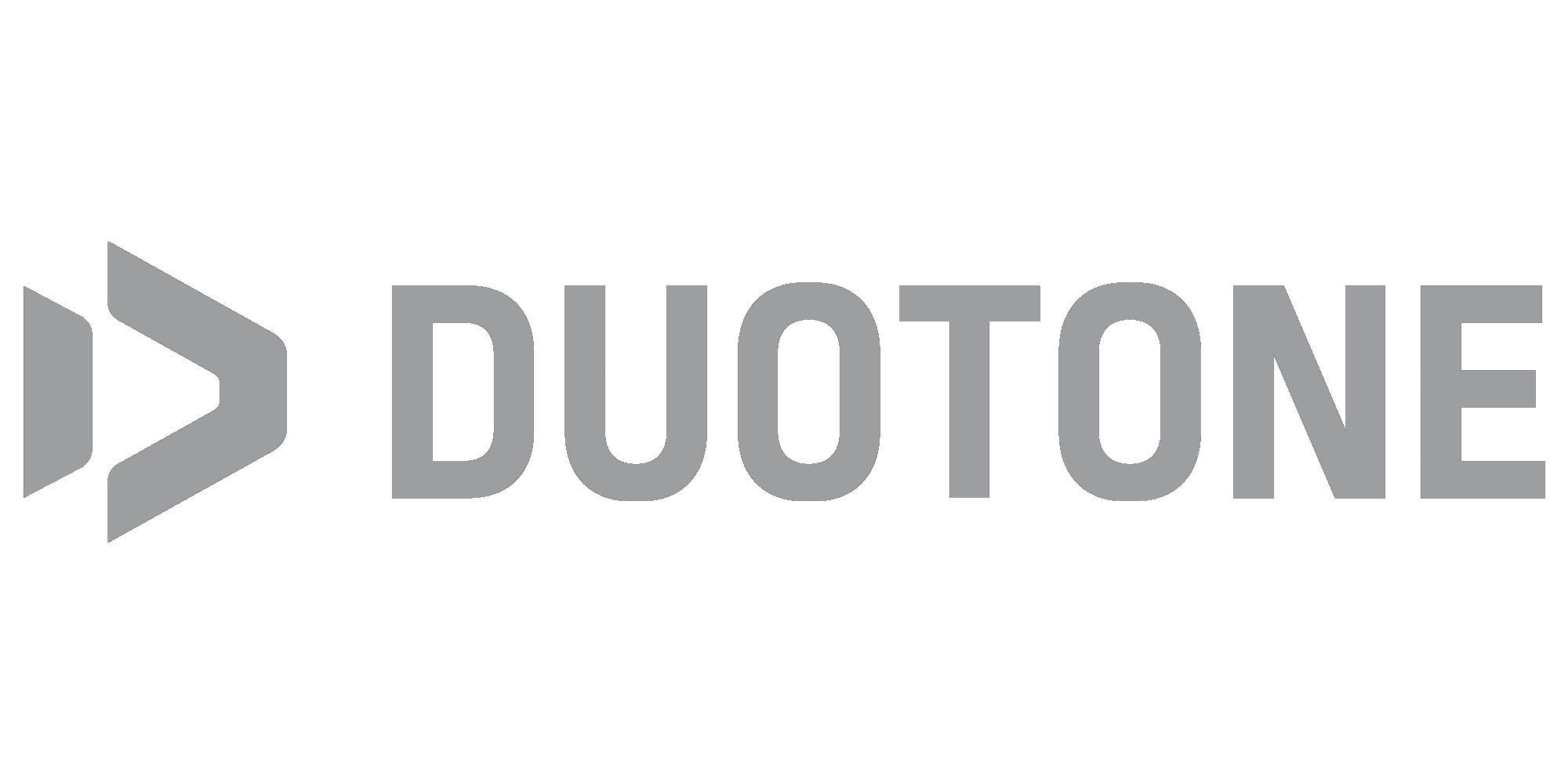



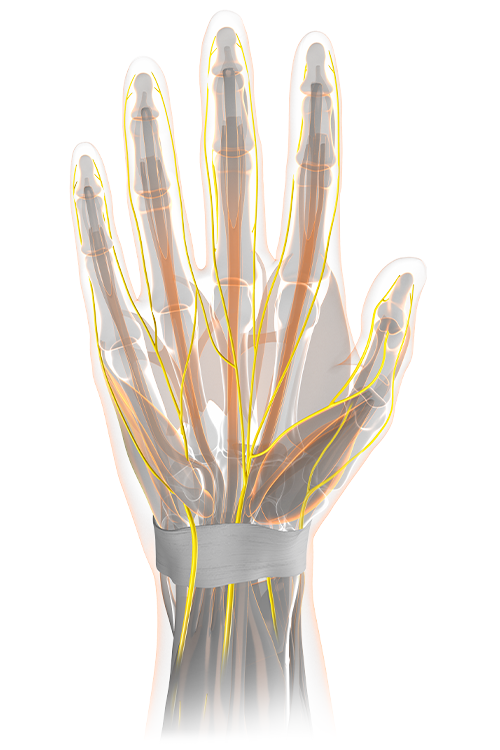
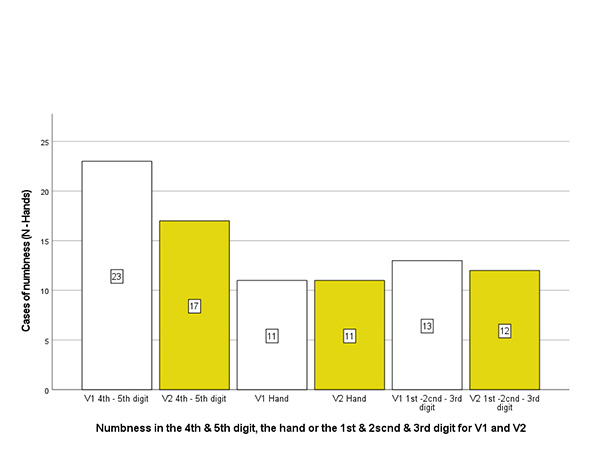
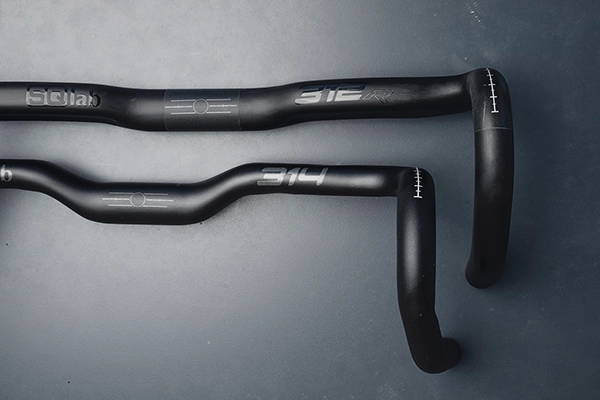
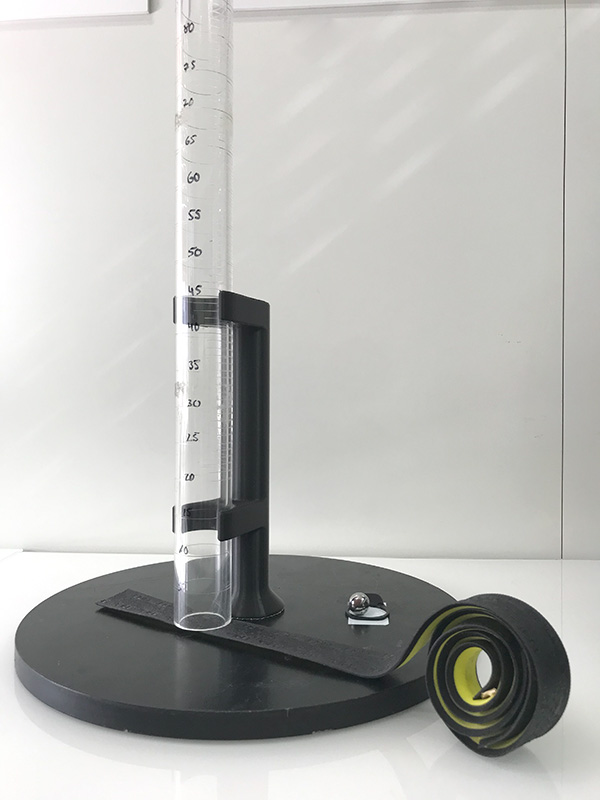
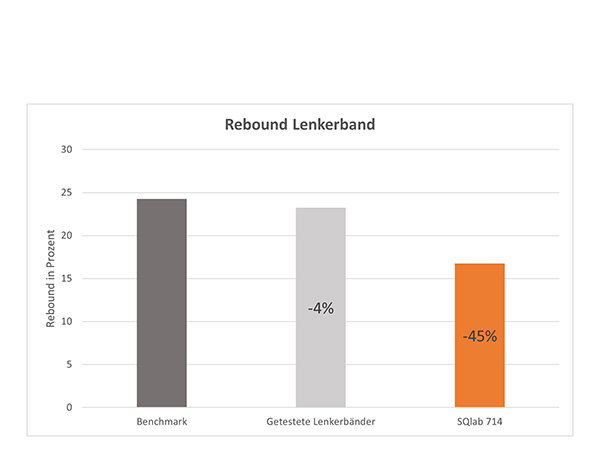
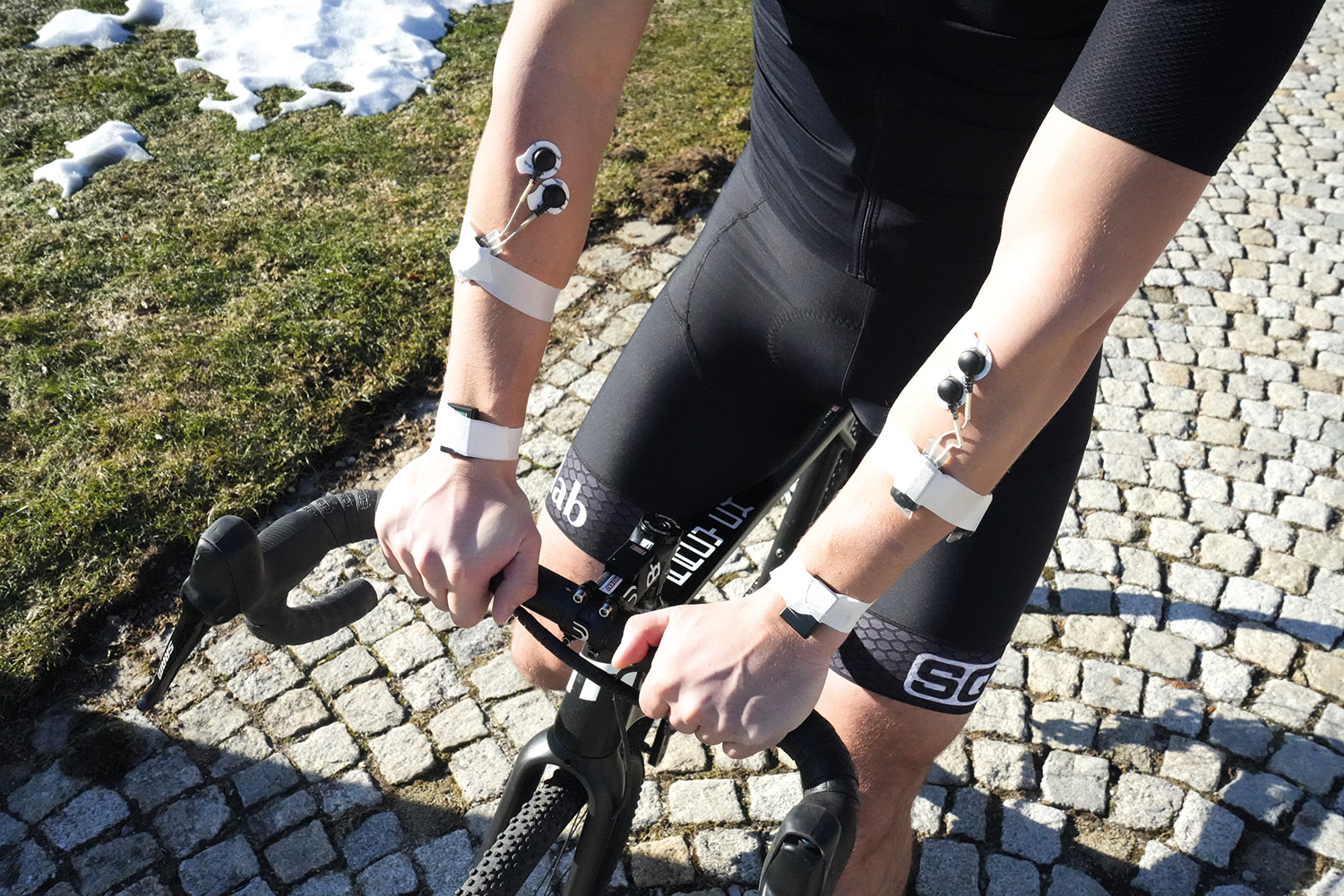
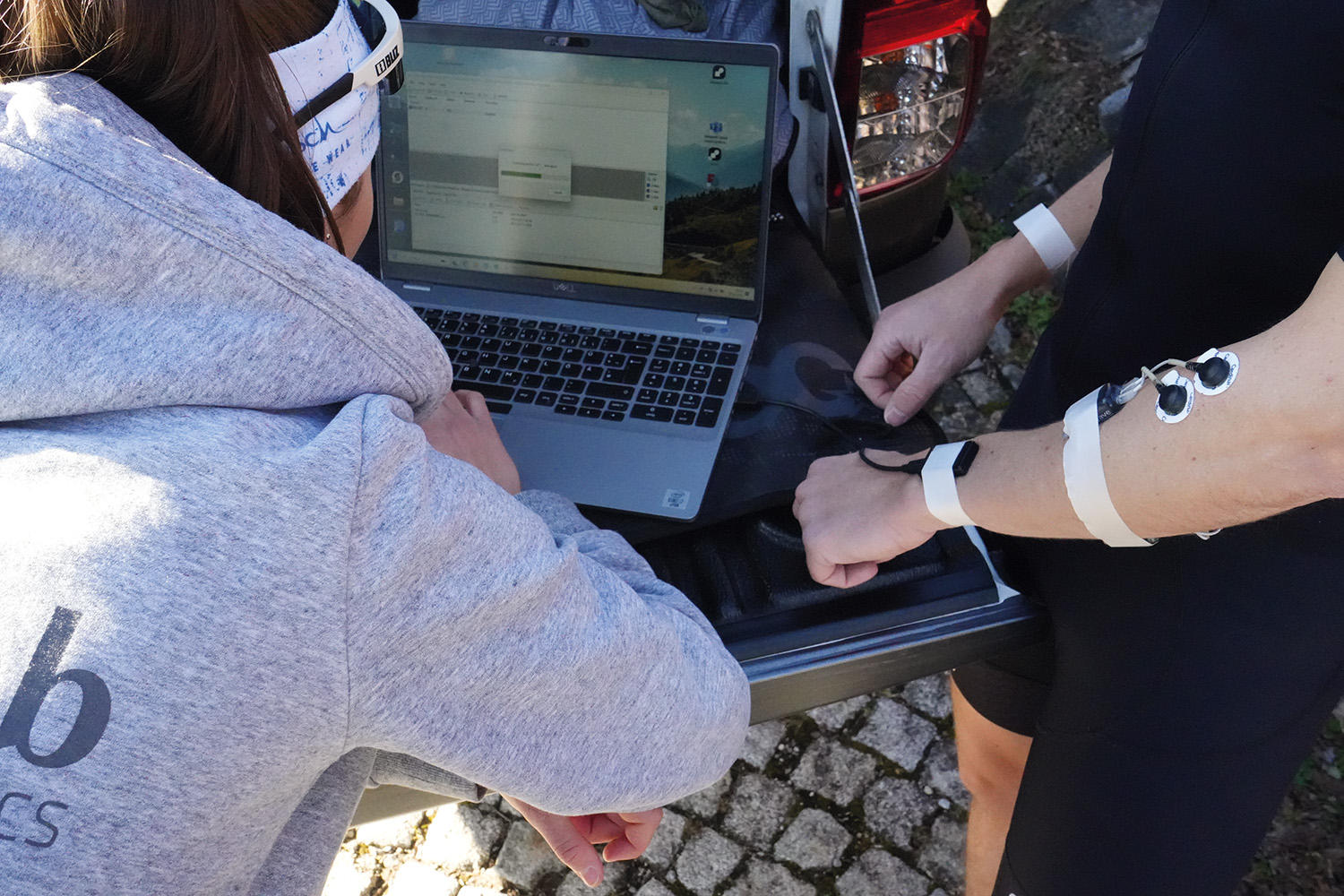
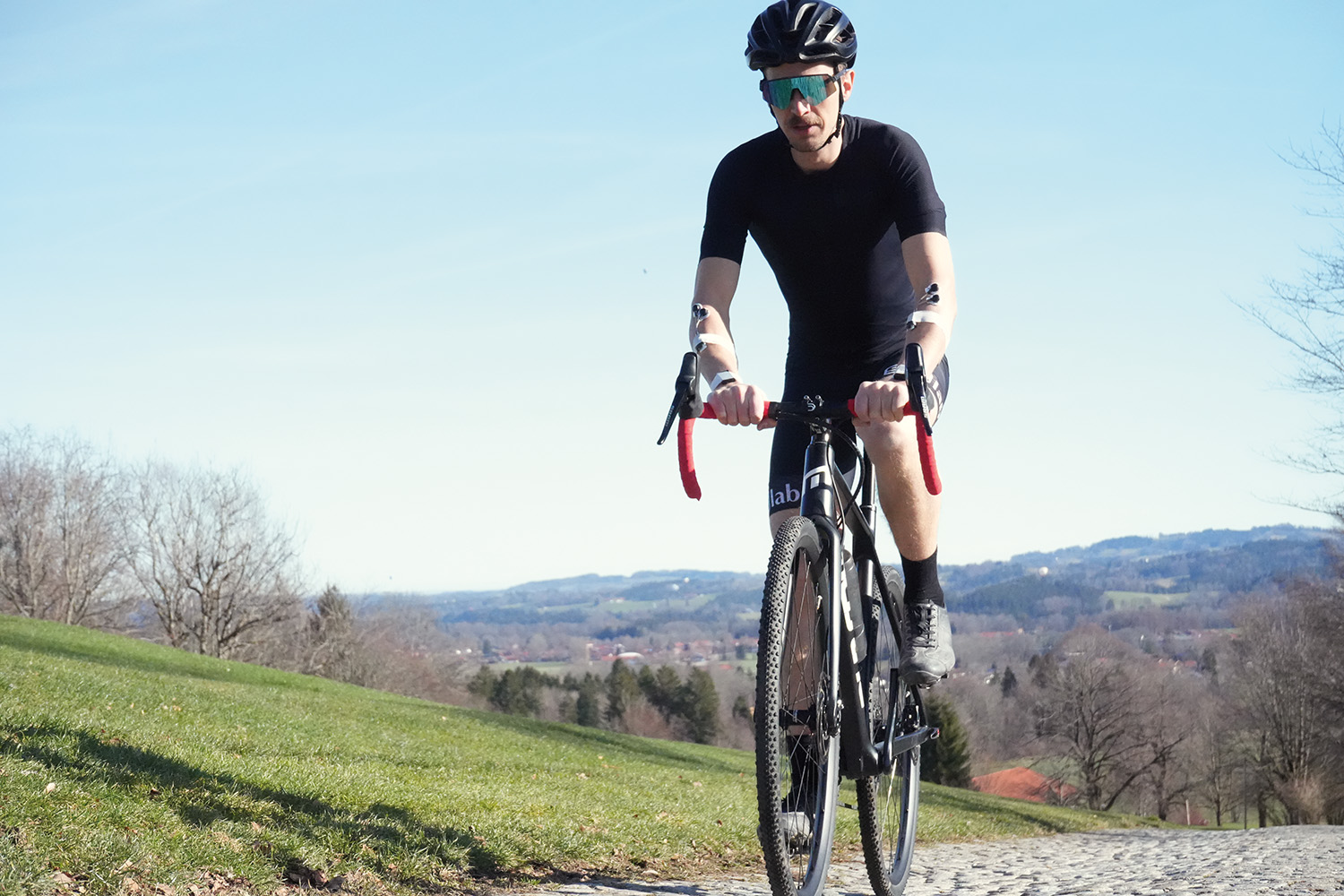
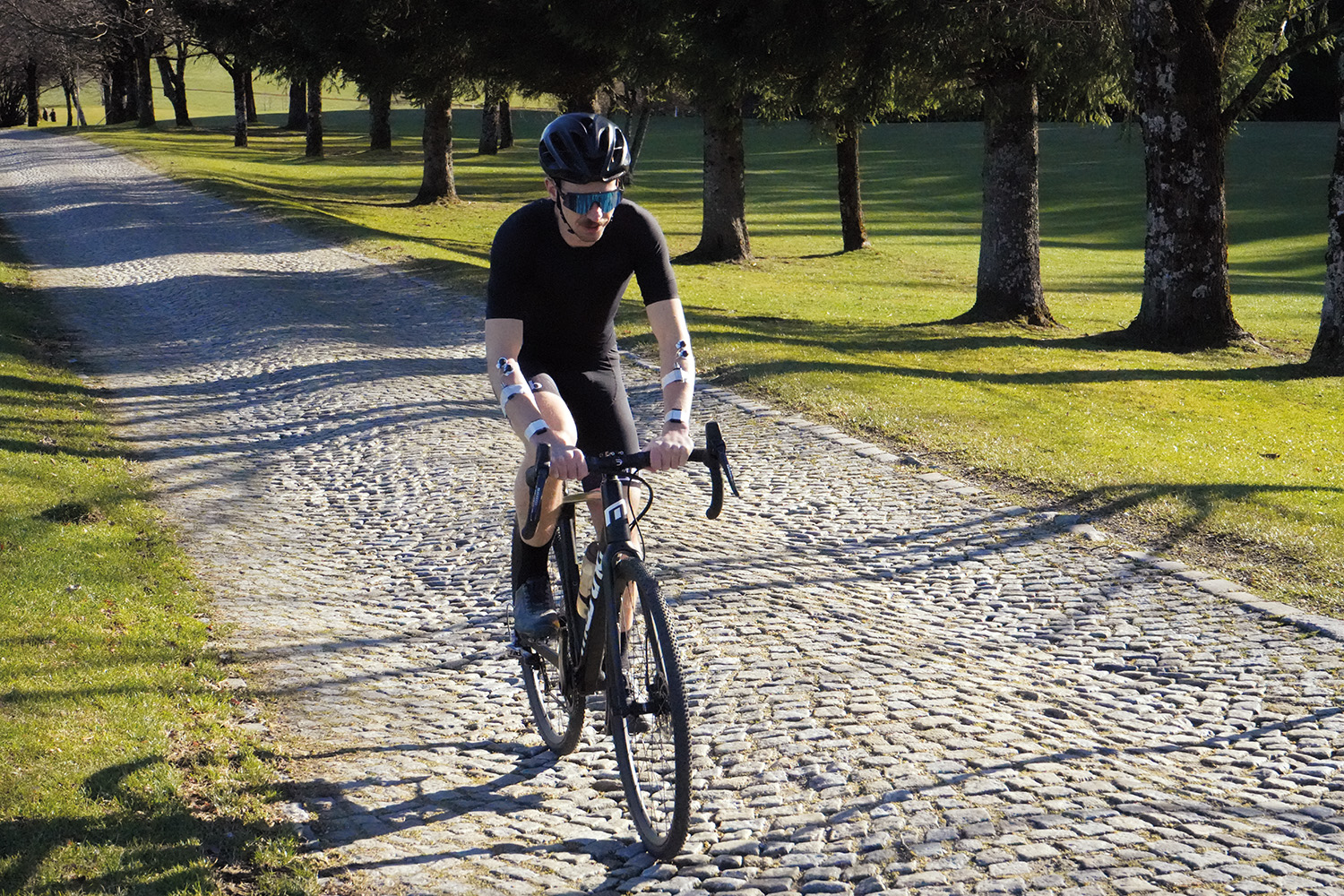
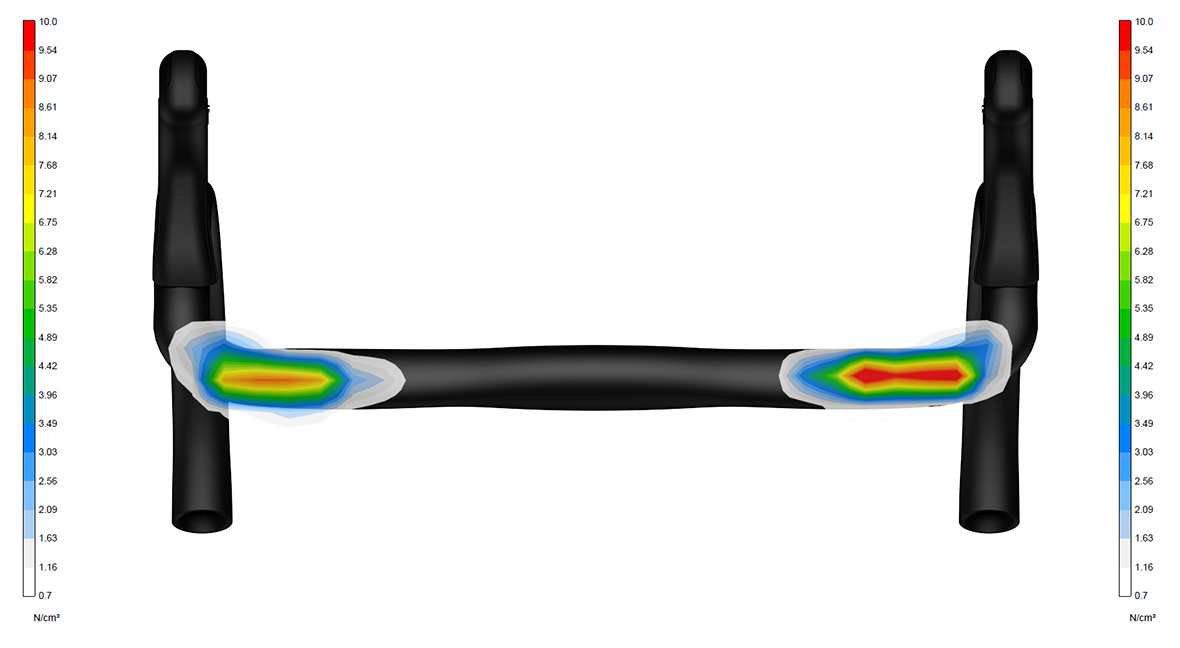
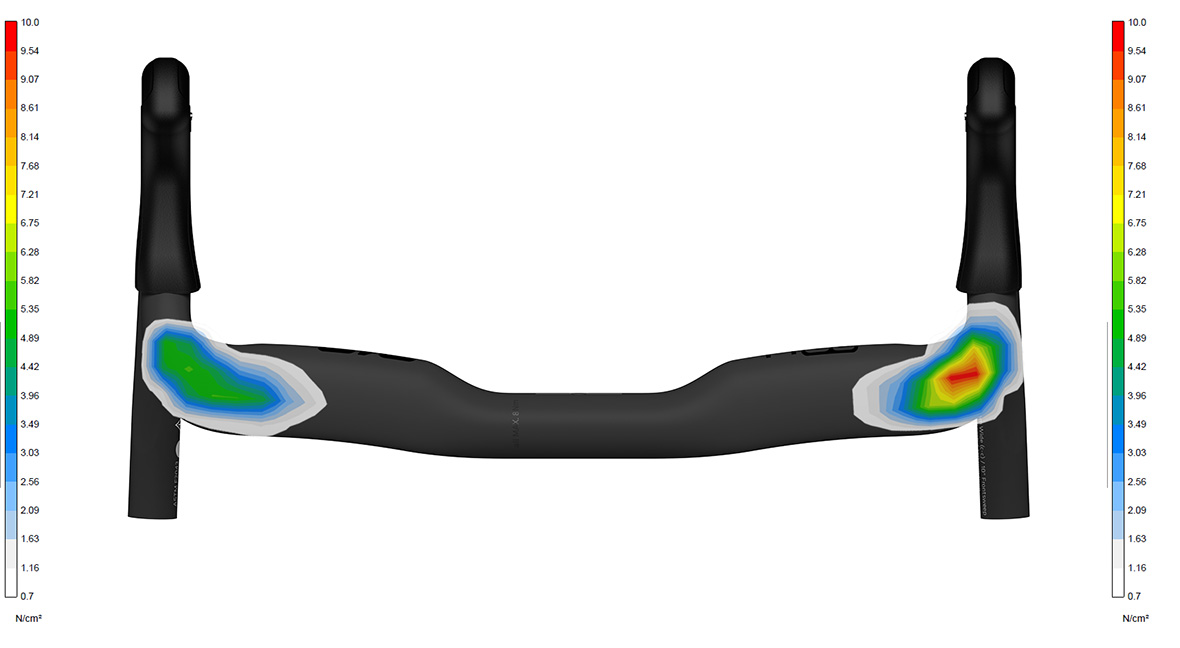
.contact)